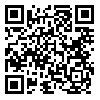Volume 14 - Special Issue, Vol.14,
irje 2019, 14 - Special Issue, Vol.14,: 82-92 |
Back to browse issues page
Download citation:
BibTeX | RIS | EndNote | Medlars | ProCite | Reference Manager | RefWorks
Send citation to:



BibTeX | RIS | EndNote | Medlars | ProCite | Reference Manager | RefWorks
Send citation to:
Yazdi Feyzabadi V, Mehrolhassani M, Monajemi F, Pourhosseini S. Measuring of Educational Inequality in Medical Sciences Sector from 2010 to 2016: A Descriptive Study in Iranian Provinces. irje 2019; 14 :82-92
URL: http://irje.tums.ac.ir/article-1-6147-en.html
URL: http://irje.tums.ac.ir/article-1-6147-en.html
1- Assistant Professor, PhD in Health Policy, Social Determinants of Health Research Center, Institute for Futures Studies in Health, Kerman University of Medical Sciences, Kerman, Iran
2- Associate Professor, PhD in Health Services Management, Medical Informatic Research Center, Institute for Futures Studies in Health, Kerman University of Medical Sciences, Kerman, Iran
3- Instructor, MSc in Medical Records, Vice Chancellery for Education, Iran Ministry of Health and Medical Education, Tehran, Iran
4- MSc in Executive Administration, Health Services Management Research Center, Institute for Futures Studies in Health, Kerman University of Medical Sciences, Kerman, Iran ,sam_poorhoseyni@yahoo.com
2- Associate Professor, PhD in Health Services Management, Medical Informatic Research Center, Institute for Futures Studies in Health, Kerman University of Medical Sciences, Kerman, Iran
3- Instructor, MSc in Medical Records, Vice Chancellery for Education, Iran Ministry of Health and Medical Education, Tehran, Iran
4- MSc in Executive Administration, Health Services Management Research Center, Institute for Futures Studies in Health, Kerman University of Medical Sciences, Kerman, Iran ,
Abstract: (3536 Views)
Background and Objectives: Access to equal educational opportunities is one of the fundamental rights in each country, and elimination of inequalities, especially in the higher education system, is one of the most important priorities. This study aimed to measure educational inequality in the medical sciences sector in Iranian provinces.
Methods: In this study, educational inequality in medical sciences was measured using the Gini coefficient. The study indexes included the number of students, faculty members, staff, majors and educational budget. Data were analyzed using Stata 14 software.
Results: During the study years, the Gini coefficient of the number of female students, male students, and faculty members showed a more or less decreasing trend from 0.51 to 0.46, from 0.53 to 0.46, and from 0.59 to 0.53, respectively. However, the values of inequality in the number of personnel working in educational sector and educational budget showed a slight increasing trend from 0.49 to 0.50 and from 0.53 to 0.54, respectively. According to the academic majors, the lowest Gini coefficient was related to non-continuous bachelor’s degree that varied from 0.13 to 0.17, and the highest value was related to fellowship degree ranging from 0.66 to 0.69 in the study years.
Conclusion: Despite reduced inequality in some educational indicators, there is a high inequality in the number of academic majors of some postgraduate degrees, number of students by gender, and educational budget, which requires policy makers to focus more on balanced distribution of educational infrastructures among provinces to provide equal educational opportunities.
Methods: In this study, educational inequality in medical sciences was measured using the Gini coefficient. The study indexes included the number of students, faculty members, staff, majors and educational budget. Data were analyzed using Stata 14 software.
Results: During the study years, the Gini coefficient of the number of female students, male students, and faculty members showed a more or less decreasing trend from 0.51 to 0.46, from 0.53 to 0.46, and from 0.59 to 0.53, respectively. However, the values of inequality in the number of personnel working in educational sector and educational budget showed a slight increasing trend from 0.49 to 0.50 and from 0.53 to 0.54, respectively. According to the academic majors, the lowest Gini coefficient was related to non-continuous bachelor’s degree that varied from 0.13 to 0.17, and the highest value was related to fellowship degree ranging from 0.66 to 0.69 in the study years.
Conclusion: Despite reduced inequality in some educational indicators, there is a high inequality in the number of academic majors of some postgraduate degrees, number of students by gender, and educational budget, which requires policy makers to focus more on balanced distribution of educational infrastructures among provinces to provide equal educational opportunities.
Type of Study: Research |
Subject:
Epidemiology
Received: 2019/01/20 | Accepted: 2019/01/20 | Published: 2019/01/20
Received: 2019/01/20 | Accepted: 2019/01/20 | Published: 2019/01/20
Send email to the article author
| Rights and permissions | |
 |
This work is licensed under a Creative Commons Attribution-NonCommercial 4.0 International License. |





